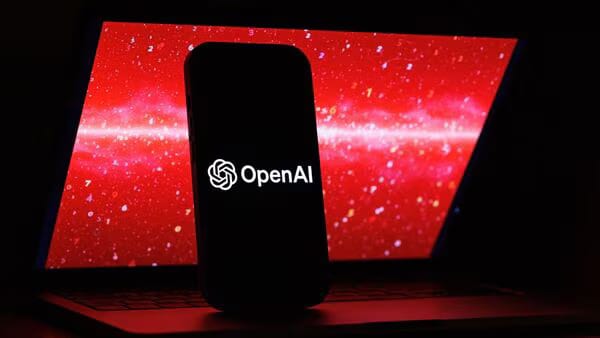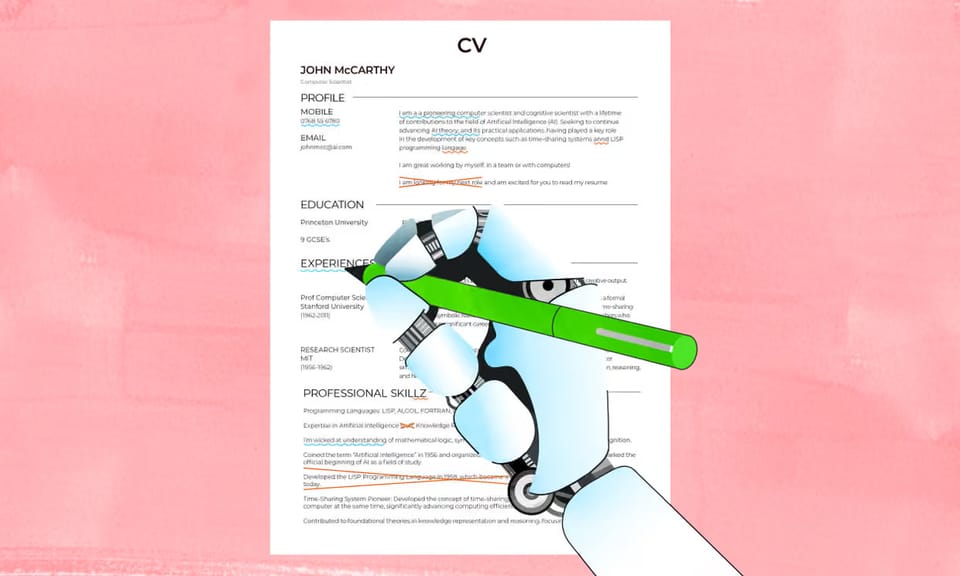How Did a Mexican Navy Ship End Up Hitting the Brooklyn Bridge?


In today’s issue:
- A Mexican Navy ship crashes into the Brooklyn Bridge
- Trump’s Middle East trip leads to billion-dollar AI deals
- The FDA races to roll out AI agencywide
- A chicken chain is using AI to go big
- Fortnite’s Darth Vader gets tricked into saying slurs
- Congress wants to block states from making AI rules for the next 10 years
Let’s dive in.
Social
How Did a Mexican Navy Ship End Up Hitting the Brooklyn Bridge?

Briefing: On Saturday night, May 17, the Mexican Navy's training ship, Cuauhtémoc (pronounced kwow-TEH-mok), collided with the Brooklyn Bridge while sailing through New York City's East River. The impact caused parts of the ship's masts (tall vertical poles that stick up from the deck of the ship) to break and led to multiple injuries among those on board.
Details: Around 8:26 p.m., the Cuauhtémoc, a tall ship used for training, attempted to pass under the Brooklyn Bridge during a promotional tour. The ship's masts struck the underside of the bridge, causing three of them to snap and partially collapse. At the time, it was carrying approximately 277 people. Nineteen people were injured, with four sustaining serious injuries.
Emergency services, including the New York City Fire Department, New York Police Department Harbor Unit (a special division of the NYPD that patrols New York City’s waterways). And the U.S. Coast Guard, responded promptly, and the injured were transported to nearby medical facilities. The ship was subsequently docked for damage assessment, and an investigation into the incident is underway.
Why It Matters: This incident highlights the challenges of navigating large vessels through urban waterways with infrastructure like the Brooklyn Bridge, which has a clearance of 127 feet, roughly the height of about 8 giraffes stacked on top of each other.
The collision not only resulted in injuries but also disrupted traffic and ferry services in the area (In New York, ferry services are boats that regularly carry people across the city’s rivers, especially the East River and Hudson River. Kind of like a bus, but on water. They help commuters and tourists get between places like Manhattan, Brooklyn, Queens, and Staten Island, often faster than traffic or the subway).
An investigation by the National Transportation Safety Board (NTSB) and the Mexican Navy is ongoing to determine the cause of the collision and to prevent similar incidents in the future. (The Guardian)
Tech
Is Trump’s Middle East Trip Giving More Power to a Few Rich and Powerful People?

Briefing: Donald Trump wrapped up a big tour of the Middle East, locking in tech deals worth billions with Saudi Arabia, the UAE, and Qatar. These agreements are all about artificial intelligence, semiconductors, and cloud computing. Major U.S. tech leaders like Elon Musk, Sam Altman, and Jensen Huang were right there with him, making moves.
Details: The UAE is set to build a massive AI campus in Abu Dhabi, aiming to be the biggest outside the U.S., and will get up to 500,000 Nvidia AI chips annually. Saudi Arabia's new AI company, Humain, is also buying hundreds of thousands of Nvidia's top-tier chips. Meanwhile, Musk's Starlink secured a satellite internet deal in Saudi Arabia. Other U.S. companies like Amazon Web Services, Cisco, and Qualcomm signed agreements focusing on cloud services and cybersecurity. These deals were made in a way that gets around earlier U.S. rules that restricted selling advanced tech (like AI chips) to countries in the Middle East, because the U.S. was worried that China might get access to this tech through these countries.
Why It Matters: These deals could reshape global tech alliances, giving U.S. companies a stronger foothold in the Middle East. They also highlight how a few powerful individuals are steering major international tech collaborations. While the agreements promise economic growth and technological advancement, they raise questions about the concentration of tech power and the potential for sensitive technology to reach unintended hands. (The Guardian)
Health
Is the FDA’s Big AI Push Moving Too Fast for Its Own Good?

Briefing: The FDA is going all-in on generative AI, aiming to use it across the board to speed up how it reviews drugs, medical devices, food, and tests. This big move comes after a successful pilot and fits with the Trump administration's push to fast-track AI use in federal agencies.
Details: FDA Commissioner Marty Makary has ordered all departments to adopt a unified AI system by June 30. Leading the charge are Jeremy Walsh, the new chief AI officer, and Sridhar Mantha, a longtime FDA data expert. The goal is to cut down review times from days to minutes. They're also talking with OpenAI about a tool called cderGPT (pronounced see-der G-P-T) for the Center for Drug Evaluation and Research.
But experts are raising red flags. They're worried about how fast this is happening, how secure company data will be, and the lack of details on the AI models and data being used. The FDA says AI will support, not replace, human decision-making.
Why it Matters: This is a major test for using AI in government. If the FDA can balance speed with safety and transparency, it could change how the agency, and others work. But if they rush it, it could lead to data breaches or bad decisions that affect public health. (Axios)
Food & Beverage
Is AI the Secret Sauce Behind America’s Next Big Chicken Chain?

Briefing: Slim Chickens, a fast-growing chicken chain from Arkansas, is stepping up its game with AI and smart marketing to become a household name.
Details: Since 2020, Slim Chickens has expanded from about 100 to 300 locations, with plans for 1,000 more worldwide. Their new Chief Marketing Officer, Patrick Noone, is using AI and geotargeting to personalize marketing efforts. They're analyzing mobile phone data to target ads in specific areas, using platforms like YouTube, TikTok, and Snapchat.
AI also helps optimize their menu and drive-through ordering, adjusting based on customer feedback. Additionally, they're building a recording studio to create unique content and support emerging artists, enhancing their brand identity.
Why it Matters: Slim Chickens' approach shows how combining technology with creative marketing can help a regional chain grow nationally. By leveraging AI and personalized strategies, they're aiming to stand out in the competitive fast-food industry. (The Wall Street Journal)
Gaming
Is AI Darth Vader the Future of Gaming or a Warning Sign We’re Not Ready?

Briefing: Epic Games added an AI-powered Darth Vader to Fortnite, using voice samples from James Earl Jones with his family's approval. But within hours, players tricked the AI into saying profanity and slurs. Epic quickly released a hotfix to stop it.
Details: The AI Vader uses Google's Gemini AI and ElevenLabs' voice tech to chat with players in-game. Despite safety filters, players got Vader to say inappropriate things, including profanity and homophobic slurs. One clip showed the AI responding with "Freaking, fucking; such vulgarity does not become you" after being provoked. Another instance involved the AI using a homophobic slur after being prompted with British slang. Epic responded by pushing a hotfix to prevent further misuse.
Why it Matters: This incident highlights the challenges of using AI in public games. Even with safeguards, players found ways to exploit the system. It raises concerns about the readiness of generative AI for live, interactive environments, especially when tied to iconic characters like Darth Vader. (PC Gamer)
Business & Finance
Is Congress Trying to Block States From Controlling AI for the Next 10 Years?

Briefing: House Republicans have added a 10-year ban on state and local AI regulations to their major tax bill. This move has sparked backlash from state officials and bipartisan concern in the Senate.
Details: The proposed clause would prevent states from enforcing any laws on AI systems, including those used in hiring, housing, and tools like ChatGPT. Supporters argue that a single federal framework would avoid a messy or inconsistent mix of state laws.
However, critics see it as federal overreach; the government going too far or taking too much power. Senator John Cornyn (R-TX) said the 10-year ban on state AI rules might not make it through the Senate because tax bills are only supposed to include budget-related items. Since AI regulation isn’t directly about money, it could get removed. State leaders, including California State Senator Scott Wiener and South Carolina Attorney General Alan Wilson, have voiced strong opposition. Tech leaders like OpenAI's Sam Altman and Microsoft's Brad Smith support a unified federal approach but haven't endorsed this specific ban.
Why it Matters: With AI rapidly advancing and concerns over issues like deepfakes and algorithmic bias growing, states have begun implementing their own regulations. This federal proposal could stop those efforts, possibly creating blind spots in how AI is monitored and regulated. The debate underscores the challenge of balancing innovation with public protection in the evolving AI landscape. (AP News)
Finding this informative? Share. Didn't like it? Feel free to unsub.
Don't want to miss any of our emails? Add us to your contacts: newsletter@tomorrowsbriefing.news




